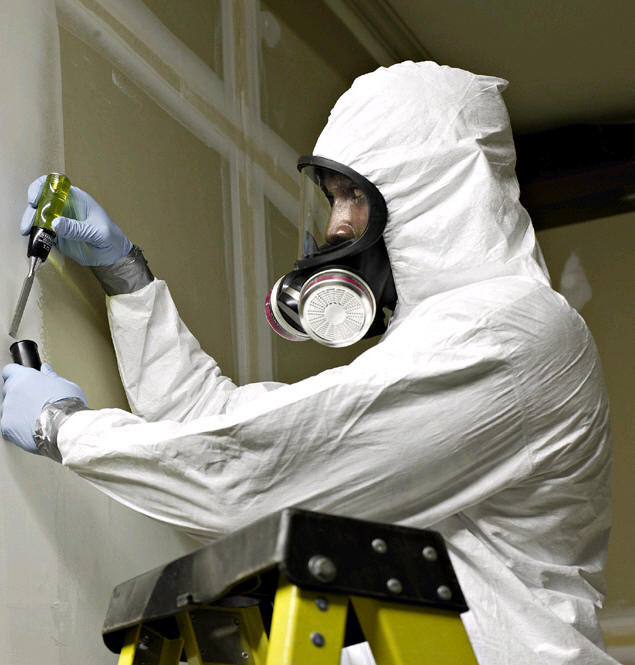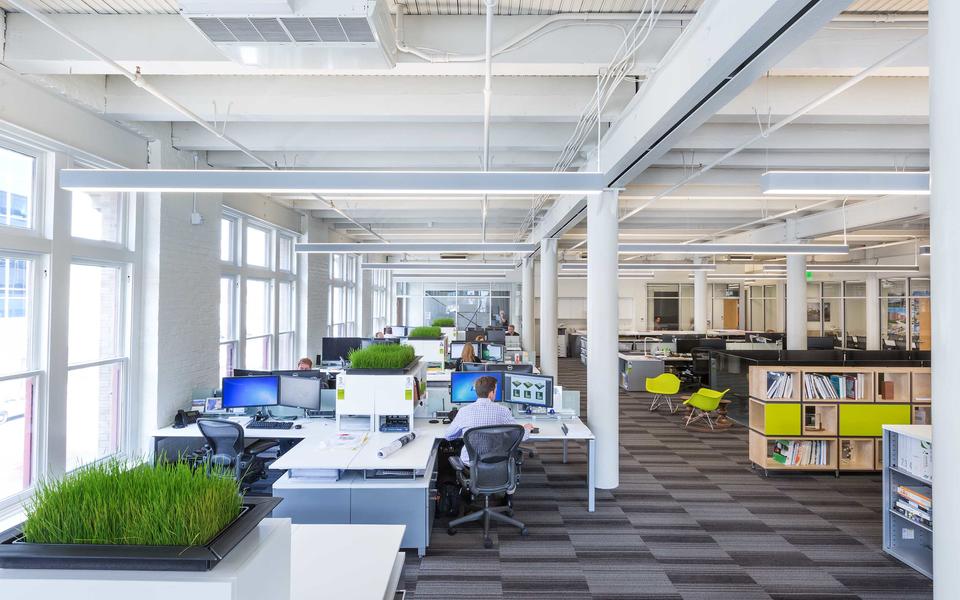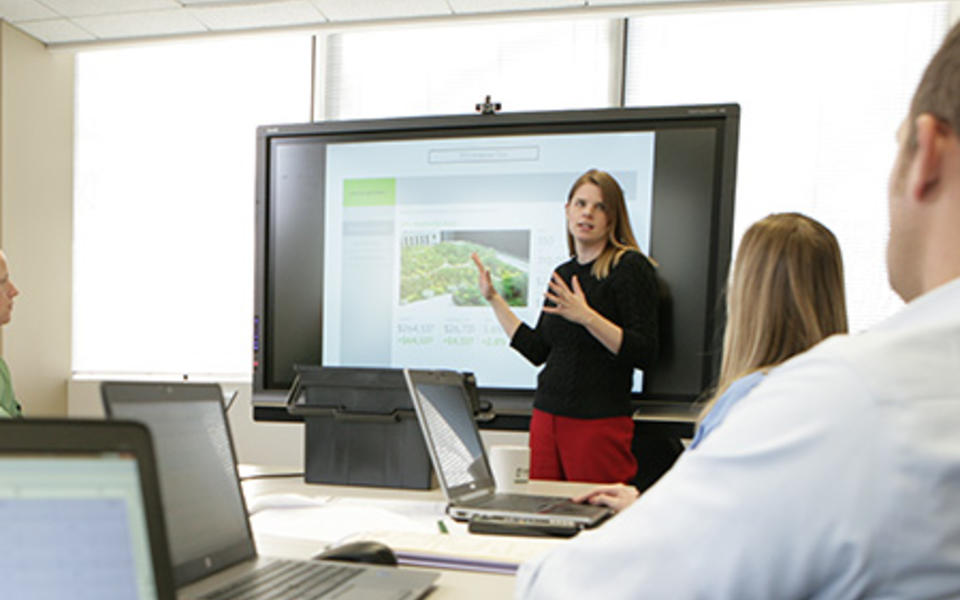High performance & sustainability, Environmental
For those with allergies or other symptoms of illness, you probably take vitamins and medicine to help your body deal with the irritants in the air and prevent your allergies from turning into illness. Some may ramp up the amount of exercise and water intake. A lot of attention is given to our health and wellness, and often it’s only when we get sick that we start to consider the influence that our environments, and specifically buildings, have on our bodies. We clean to get rid of dust, disinfect to eliminate germs, set up air purifiers and maybe even go so far as to look for signs of mold and other underlying problems.
What if we approached our buildings in the same way that we (should) approach our bodies? Where instead of treating sick buildings, we focus on keeping them well?
It’s possible, and it’s really important.
I’m passionate about sustainability and healthy environments so it’s easy for me to dive deep into a conversation about materiality, carbon footprints and resiliency. I’ve devoted my career to studying these topics and making changes that improve the health of humans through our environments.
But most people’s eyes start glazing over when I talk about healthy buildings because it’s conceptual and less tangible than eating right and exercising. So let me make it tangible for you.
What are the causes of a sick building?
One of the top news story in recent years was the Flint, Michigan water crisis, where the water that residents were using in their homes was contaminated with lead. We didn’t need to explain how dire the situation was; everyone knew the negative effects of exposure to lead. Bottled water was distributed across the city.
Have you heard of asbestos? Even if you don’t know what asbestos is, you know it’s not good to be exposed to it. Both of these chemicals are for the most part banned from use in building materials today, but that hasn’t always been the case.
Asbestos was used in flooring materials up until the 1980s, and both lead and asbestos are common in buildings and homes of a certain age. It wasn’t until years after they were installed that we realized the negative effects these elements have on our health. Now, we have abatement plans and wear hazmat suits to get rid of them.
Preventing the next asbestos crisis
Have you considered that there are other chemicals found in products today that also have adverse effects? Leaders in our industry are thinking about how to prevent the next asbestos crisis through education and transparency. By partnering with manufacturers, we’re finding ways of exposing the contents of the products and materials we put into our homes, our schools, our hospitals and theaters.
More importantly, we’re working with them to eliminate the materials that contain hazardous chemicals from our buildings, and thereby improve our health over the long term. By forcing the conversation of transparency in our building products we are starting a new tipping point of advocacy and awareness just as the food industry did when it started labeling ingredients on our food products.
Where can you start?
Hopefully you are convinced that it’s important to know the contents of what we put in our buildings and are ready to make some changes in your own home. If, so below are some quick and easy changes you can make starting today:
- Change out your light bulbs to LEDs… start with one fixture and change them over time.
- Go to your local nursery and choose from NASA’s list of indoor plants that help purify the air.
- Invest in a Nest thermostat that learns your behaviors and adjusts the settings for you. It also allows you to program the system from anywhere on your mobile devise. Some local utility programs are even offering rebates.
- Re-caulk around windows, which will help with moisture and air control.
- Choose cradle-to-cradle certified cleaning materials, such as Method.
Resources you can use
In my home, a few years ago we renovated our kitchen. It took extra time to do it right and ensure that the materials we brought into our home were safe. We used Red List-free materials. The Red List was established by the Living Building Challenge to track materials that contain chemicals that are harmful to humans or the environment.
So, for our kitchen, we chose formaldehyde-free and carb compliant products for paint, flooring and cabinets. We incorporated LED lighting to avoid mercury. For the installation, we followed Pepper’s Nothing Hits the Floor program, where weworked with the contractor to deliver and install the product in the same day, as well as protected the rest of our home from construction dust. For the insulation, we used an alternative to fiberglass, such as that made by Knauf.
To find alternative materials, I referenced the following databases for information:
- Mindful Materials - free database that was started by design firms to search for alternative healthy materials
- Declare – a database of product ingredients designed to encourage transparency, much like a nutrition label. It relies on manufacturers to share their product information.
- Cradle to Cradle Certified – signifies brands and products with a promise of continual improvement and sustainability.
- Greenguard – database of products certified by UL Environments for low emissions.
Bonus tip: over the years, emphasis has been placed on flame retardant materials to keep us safe in case of fire. However, we’ve learned that the chemicals that make them flame retardant aren’t safe. In my home, we opt for furnishings that do not have flame retardant coatings. Lesson learned: educate yourself on what the titles really mean.
Cost of “upgrading” materials and systems
Typically, there is no upcharge to upgrade to safer materials – and sometimes you’ll even find savings. Right now, formaldehyde-free paint is one of the only products that is more expensive… but at three percent, it still seems rather insignificant compared to the benefits. Sometimes alternates are available you just have to research options.
For example, my brother-in-law’s basement flooded, and they had to replace everything. To keep cost down, he was looking at vinyl flooring product but was worried about the formaldehyde that goes along with it, especially since he has four kids running around. He opted to go with the more natural choice of linoleum, giving him the same performance as vinyl but without all the toxins. It was a minimal cost increase, but to him, having an environment for his kids that didn’t expose them to carcinogens was worth it.
The major upfront investment of switching to healthy materials is the time it takes to research the right products (and hopefully I’ve just handed you some savings). However, the return has the potential to be astronomical.
You can’t really put a price on good health – nor should you take it for granted.
About the Author





